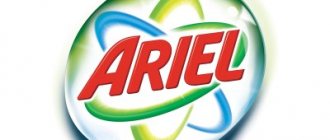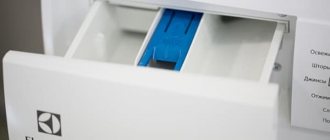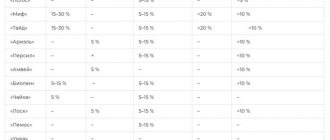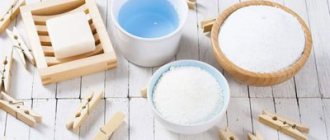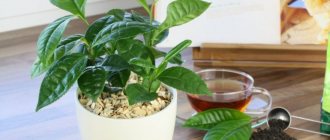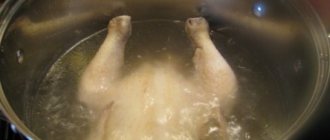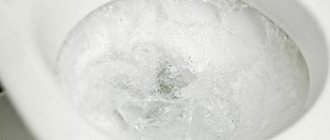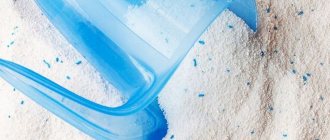Washing powder is still the most popular means for washing all kinds of things in a washing machine and by hand, so many housewives will find it useful to know how many grams of washing powder will fit in a teaspoon and a tablespoon, and how it can be quickly measured without scales using just spoons at home.
Important: below are the data for spoons with powder without a heap, since when you put washing powder into a spoon with a heap, the accuracy of measurement is significantly reduced (the volume of the heap may be different for everyone, especially if the powder is a little damp - in this case the heap can be 3 -5 times the volume of a spoon).
How many tablespoons are in 100 g?
And if you are interested in 100 grams - this is how many tablespoons, then know that it is four.
Interesting materials:
What can I do to prevent pills from appearing on my coat? What to do to heat up the thermometer? What to do to pump up your neck? What to do to avoid an accent? What can I do to avoid itching from glass wool? What to do to prevent the fabric from becoming electrified? What can I do to keep my laptop monitor from going dark? What to do to avoid getting drunk at a party? What can you do to prevent your avocado from turning black? What to do to prevent laundry from fading?
Why measure out powder?
Why you need to accurately measure SMS (synthetic detergent):
- Saving. When using concentrated products, it is easy to make big mistakes. If you put a lot of powder, washing will cost more.
- Washing quality. If, due to the underweight of the product, the dirt cannot be washed off the first time, you will have to start the SMA again, again wasting water and electricity.
Manufacturers of powders and gels can add measuring spoons or cups to the product kit, but only some SMS are equipped with them. If the dosage is indicated on the package in grams, you have to measure out the required amount. You can use scales, but not every kitchen has them and not everyone wants to bother with them. It’s easier to use a spoon or “Tide” - because it’s always at hand.
In cooking and folk medicine, a teaspoon or a tablespoon is a favorite measure of weight and volume indicated in recipes. It is easy to find tables on the Internet that indicate the weight of various substances measured with spoons - salt, soda, pepper, etc. And we will learn how to measure the required amount of SMS with them.
Bulk products
It should be noted that a tablespoon as a measure of weight for various substances differs little in accuracy from the same mechanical or electronic devices that exist in a modern kitchen. To determine the weight of bulk products, two quantities are used:
- when the spoon is filled only to the brim (without a slide);
- when the maximum amount of food (with a slide) is placed in the spoon.
The cook himself chooses how to measure the required amount of a particular product, filling the spoon with a heap or not. It depends on exactly how many grams he needs for the dish he is preparing. Sometimes it is more convenient to take the weight with a slide for calculation, and in other cases - without it.
Table of the weight ratio of bulk products contained in a tablespoon, in grams.
| Products | Weight in st. heaped spoon (g) | Weight in st. level spoon (g) |
| Sugar/Powdered sugar | 25/30 | 20/25 |
| Citric acid in crystals | 16 | 12 |
| Rock salt (coarse) | 30 | 25 |
| Fine salt (extra) | 28 | 22 |
| Round rice | 20 | 16 |
| Dry buckwheat | 25 | 20 |
| Millet | 25 | 20 |
| Wheat flour | 25 | 20 |
| Baking soda | 28 | 22 |
| Ground coffee | 20 | 15 |
| Gelatin granules | 15 | 10 |
| Starch | 30 | 20 |
| Semolina | 25 | 20 |
| Cocoa powder | 25 | 20 |
| Hercules | 14 | 10 |
| Ground crackers | 15 | 12 |
How many grams of flour are in a faceted glass?
Remember, grandmothers used to always have it and often used it as a measure for the volume of food. Moreover, if some ingredient has a large volume, or simply measuring it with spoons is tedious and time-consuming, then we take an ordinary faceted glass as a measuring device.
Its volume is 250 ml, and the volume of water along the rim is 200 grams.
Here is another list of products that fit into a faceted glass up to the rim.
- Water - 200 gr.;
- Sugar - 160 gr.;
- Wheat flour - 130 gr.;
- Whole milk - 205 g;
- Powdered milk - 100 g;
- Vegetable oil - 190 gr.;
- Ghee butter - 190 gr.;
- Oatmeal - 80 gr.;
- Buckwheat - 165 gr.;
- Peas - 185 gr.;
- Rice - 175 gr.;
This information may contain slight errors regarding products of bulk or liquid, viscous consistency.
Washing parameters and dosage
The amount of detergent required for high-quality washing of stains is influenced by the following factors:
- Temperature. Hot water means less SMS consumption.
- Degree of pollution. Dirtier laundry means more dose.
- Hardness of water. Hard water - high doses.
- Amount of laundry . More loading - more SMS for washing.
- Water consumption per cycle. As water consumption increases, SMS consumption increases.
- Washing program and fabric type. Selected individually. It is recommended to wash wool and silk with special products.
It is always useful to know how much of a particular substance is contained in the most popular cutlery. A simple spoon can be useful in a variety of situations. When placing SMS into a cuvette, try not only to measure the dose correctly, but also take into account as many factors as possible that influence the wash.
Is it possible to pour powder into the drum of a washing machine?
Manufacturer's operating instructions confirm that powder should not be poured into the drum. And the point here is not about maintaining the working condition of the machine, but solely about the quality of washing.
Interesting materials:
What are the days off for Passover in Israel? What documents are needed to travel by train? What documents are needed to obtain a loan from the Post Bank? What documents are needed to register those in need of housing? What documents are needed to improve the qualifications of a 4th grade security guard? What documents are needed to open a store? What documents are needed for 1st grade 2022? What documents are returned upon expulsion? What kind of pots should be for orchids? Which pets are the cleanest?
Oils
Modern hypermarkets offer customers olive, sunflower, corn and many other types of oil. Each individual species has its own characteristics and chemical composition. The oil is used to prepare first courses, desserts, meat, and baked goods. You should not add more of this substance than normal; it is important to maintain the proportions to obtain not too fatty, healthy food. How much oil is in a teaspoon depends on the specific type. The average is 6 g.
Powders are still the most popular laundry detergents. In order to wash clothes well without using too much detergent, users try to accurately measure the dose specified by the manufacturer. Let's find out how many grams of powder are in a spoon - the simplest measuring device available in every home.
Liquid and viscous products
Products in liquid form are measured in either milliliters or grams. Both of these measures can be found in culinary recipes. In a tablespoon, the volume (ml) and weight (g) of many popular liquids in cooking have long been determined and summarized in tables. The hostess can only look into them and use this cutlery to measure the required amount for her dish - be it in milliliters or grams.
Here is a table of the content of liquids and viscous products in a tablespoon in grams. It will not be possible to pour liquid into a spoon above its edges, so the maximum amount of food is limited to these edges. But some viscous ingredients can be placed in heaps, for example, thick honey or homemade high-fat sour cream. This is why the table below shows two weights for viscous products.
Not all that glitters is gold: how to make silver and cupronickel cutlery shine
Table of the weight ratio of liquid and viscous products contained in a tablespoon, in grams.
| Products | grams in tablespoon | Maximum total number of products |
| Water | 18 | — |
| Raw milk | 20 | — |
| Condensed milk | 28 | — |
| Vinegar | 15 | — |
| Melted butter | 17 | — |
| Melted margarine | 15 | — |
| Vegetable oil (sunflower) | 17 | — |
| Liquid fat | 20 | — |
| Liquid jam (average) | 35 | — |
| The jam is thick (on average) | 45 (without slide) | up to 60 |
| Liquid honey | 35 | — |
| Honey is thick | 50 (without slide) | up to 70 |
| Heavy cream | 30 (without slide) | up to 50 |
| Thick sour cream | 30 (without slide) | up to 50 |
| Low-fat sour cream | 25 | — |
| Mayonnaise | 20 (without slide) | 30 |
| Tomato paste | 30 (without slide) | 40 |
| Cottage cheese (on average) | 20 (without slide) | 35 |
It should be said that a standard measuring tablespoon is taken to be a product whose scoop length is 7 cm, and the width of its widest part is 4 cm. This is the kind of spoon that is mentioned in cooking. If anyone does not know whether there is a standard spoon at home, then you can take any other one and measure it by placing or pouring the product into some vessel whose volume is known. By counting the number of spoons required to fill the vessel, it is easy to find out how much product in grams fits in 1 spoon of a given type.
How to measure washing powder without scales using spoons
To quickly measure out the washing powder before starting washing (regardless of its brand: Tide, Ariel, Persil, Eared Nyan, Sarma
- 150 grams of washing powder = 15 tablespoons.
- 120 grams of washing powder = 13 tablespoons.
- 100 g of washing powder = 6 tablespoons + 2 teaspoons.
- 90 g of washing powder = 6 level tablespoons of washing powder.
- 80 g of washing powder = 5 tablespoons + 1 teaspoon.
- 70 g of washing powder = 4 tablespoons + 2 tea.
- 60 g of washing powder = 4 tablespoons of powder.
- 50 g of washing powder = 3 tablespoons + 1 tea.
- 40 g of washing powder = 2 tablespoons + 2 teaspoons of powder.
- 30 g of washing powder = 2 level tablespoons of powder.
- 20 g of washing powder = 4 teaspoons of powder.
- 10 g washing powder = 2 teaspoons washing powder.
- 1-2 grams of washing powder = a fifth of a teaspoon or can be measured on the tip of a knife.
Note: when washing in a washing machine, the following dosage is most often used: 1 level tablespoon of washing powder per 1 kg of soiled laundry or clothing. You can read more about the correct dosage in the article: how much powder to pour into the washing machine.
Instead of a conclusion to this article, we note that weighing washing powder with spoons, like many other bulk products in everyday life, is very convenient, because you don’t need scales, and the measurement accuracy is quite high. We leave our reviews and advice on the topic of how much laundry detergent in a tablespoon and a teaspoon in the comments to this article and share it on social networks if it was useful to you.
Inna Vilkova
Hi all! I am Inna, the author of articles on this blog. An enterprising housewife with more than 4 years of experience in a cleaning company. I will be happy to answer all questions on the topic of articles in the comments! Always ready to share my useful tips!
Save on social networks:
Dry yeast
It’s rare to meet a housewife who doesn’t spoil her family with baked goods. The secret to delicious pies is properly prepared dough that contains yeast. Most modern women use a quick version of this product - dry powder. A teaspoon contains 3-5 g of yeast if you weigh it on a special scale. The specific amount depends on whether the substance is measured with or without a slide.
Why is an overdose of SMS unprofitable?
If you read what is written on the package, it is easy to get confused and make mistakes. There is an opinion that manufacturers deliberately inflate doses so that consumers use up the pack as quickly as possible. In this simple way, the manufacturer increases income by about 10%.
It is not advisable to exceed the dose, things will not wash out better, but the negative consequences of an overdose will be:
- Rinsing dry matter is always a difficult task, and if it is put in excess, it becomes much more complicated. And if you don’t turn on an additional rinse - and this again means extra consumption of water and electricity, then white stains will appear on the fabric - signs of an overdose.
- A chemical “amber” will “start up” inside the drum. It persists for a long time, being transferred to the laundry during subsequent washes.
- The tray is clogged.
Frequently asked questions
Users who do not understand weights and measures often encounter problems when measuring detergents. They have questions:
- Users often ask whether 10, 30 or 50 mg is how many teaspoons? You should remember how many milligrams are in 1 gram. One gram contains 1000 mg, so to measure out this amount of product, you will most likely need a knife. 50 mg = 0.05 g, this is a hundredth part of 1 tsp. This amount is usually about.
- 30 grams of powder is how many spoons? The answer is, depending on which ones. If there are tea glasses, then 6, if dessert ones - 3. With table drinks it is more difficult - you need to measure one incomplete, without 5 g.
How much liquid powder should I pour into the machine?
Many of them have practically established that to effectively wash clothes, it is enough to add 2-3 tbsp. l. facilities. This quantity is suitable for machines with a load of 5–6 kg and a water consumption of 35–50 l.
Interesting materials:
What kind of sand for art concrete? Which beach is on the Black Sea? What approach allows us to highlight the main results of training and education in the context of key tasks? Which train is considered high speed? Which pole of the magnet is positive? Which peninsula is the largest in area Arabian Indochina Kamchatka? What breed is the cat Matroskin? What breed is the Crookshanks? What constant morphological feature does the adverb have? What was Valentina Vladimirovna Tereshkova’s call sign?
